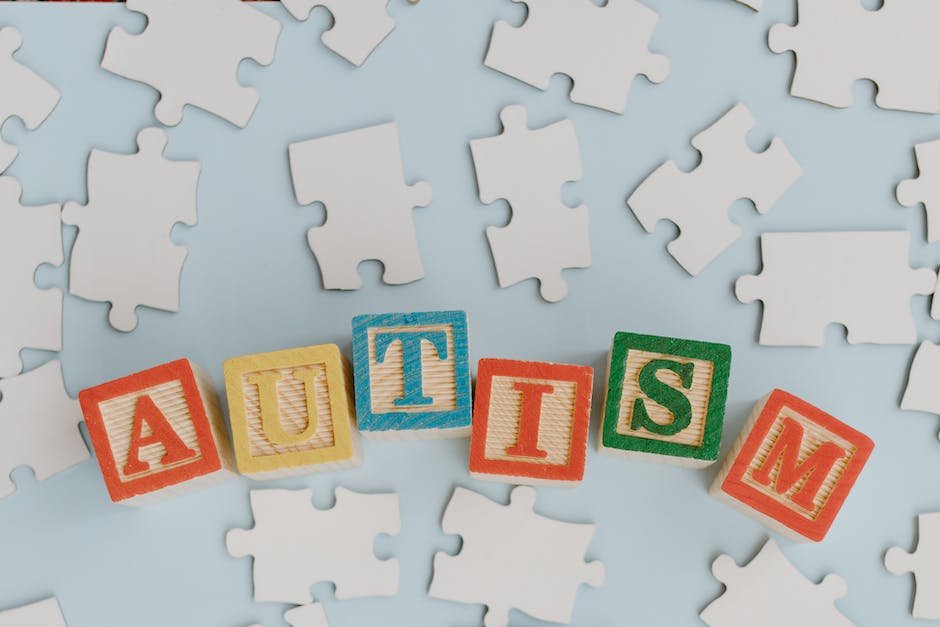
In our diverse world, understanding and acceptance is a continuous journey, especially when it comes to conditions like Autism that demand more empathy and patience. Autism not only presents unique traits in individuals that require specific attention but is also often linked to various issues such as anxiety. Recognizing the signs and understanding the complexities of Autism helps us interact with autistic children effectively, fostering their growth and development. Further, being aware that children with autism can be more susceptible to anxiety disorders, it becomes crucial to delve into the elements of this intersection, and identify ways to best support and care for these children.
Understanding Autism
Understanding Autism and its Impact on Children’s Lives
In the vibrant tapestry of humanity, every child is unique, each accented with different abilities, characteristics, and needs. One of the important threads in this tapestry is autism, a developmental condition that affects 1 in 54 children in the United States according to the Center for Disease Control and Prevention (CDC).
Autism – or Autism Spectrum Disorder (ASD), as it’s medically known – is a complex neurological condition that affects a child’s communication, behavior, and social interactions. Equally complex is its range of presentations, as the “spectrum” in its name suggests. This means the way ASD manifests can differ greatly from child to child – some children could be extremely intelligent and capable, needing minimal assistance, while others might require more comprehensive support.
Impacts on Communication and Social Interactions
One of the significant ways autism affects a child’s life is through communication and social interaction. Some children with ASD might have delayed speech development, trouble maintaining a conversation, or difficulty understanding social cues like body language. They might also prefer to play alone, rather than joining in group activities.
Understanding Emotional and Sensory Sensitivities
Children with autism often experience heightened emotional and sensory sensitivities. Everyday noises might seem louder, lights brighter, smells stronger. These sensitivities can result in behaviors that allows the child to cope, like stimming – self-stimulating behaviors like hand flapping, rocking, or spinning.
Living with Repetitive and Rigid Behavior
Children with autism often tend to thrive on routine and sameness. They may have a set of particular foods they eat, clothes they wear, or routes they travel. Change in this routine can sometimes result in intense emotional reactions.
The Gift of Special Interests
Let’s not forget, autism imparts its own set of strengths and talents. Children on the spectrum often have a deep, passionate focus on specific topics of interest. They could master in-depth knowledge on these subjects, often exceeding their peers.
Early Intervention and Support
While autism involves a lifelong journey, early intervention can immensely benefit children on the spectrum. Timely therapies and support can enhance their abilities to adapt, communicate, and interact with the world around them.
Understanding a child with autism needs empathy, patience, and above all, love. It is by celebrating their unique abilities and approaching their challenges with understanding and acceptance that truly helps them shine. As part of a loving community, we all can learn and grow together, fostering environments that encourage every child – autism or not – to reach their fullest potential.
So, next time you meet a child who seems a little different, remember this: They are not less, simply different, and every difference is a piece of the beautiful tapestry that is humanity. After all, as celebrated author and autism spokesperson Dr. Temple Grandin said, “What would happen if the autism gene was eliminated from the gene pool? You would have a bunch of people standing around in a cave, chatting and socializing and not getting anything done.”

Autism and Anxiety – A Connection
The Intricate Relationship between Autism and Anxiety
Did you know that the intricate tapestry of human neurodiversity isn’t limited to the rich spectrum of Autism? It can also intertwine with other conditions such as anxiety disorders, furthering the complexity. Understanding the connection between autism and anxiety might be the key to helping your child navigate their unique world with added confidence and ease.
First, let’s establish what we mean by ‘anxiety.’ Anxiety, unlike temporary worry or fear, is a persistent helping, sometimes life-limiting, emotions that are often triggered by specific situations, objects, or rituals. These triggers may seem mundane to some but can be paralyzing for an individual living with anxiety.
So, what links autism to anxiety? A large faction of children on the autism spectrum concurrently experience varying degrees of anxiety. Estimates suggest that about 40% of young ones with autism have at least one comorbid diagnosed anxiety disorder. This linkage? It lies within the shared traits and coping mechanisms utilized by both conditions.
A salient feature is heightened sensory sensitivity, a common denominator for both autism and anxiety. When the environment becomes too loud, too bright, too crowded, or simply too much, it can instigate a surge of apprehension and stress. This often manifests as, what we refer to as, sensory overload or a meltdown, coupled with distressing anxiety.
Contradictory, predictability, often a source of comfort to those on the autism spectrum, can equally become an anxiety trigger when the foreseeable is further changed or upset. A sudden shift in routine can be incredibly disorienting, leading to intense anxiety and worry about further unseen changes.
Take a strive towards adjusting your perspective, understanding that not all behaviors directly correlate to ASD. Recognizing when anxiety is playing a role is vital in providing the appropriate support for your child. When noted, specific treatment strategies like Cognitive Behavioral Therapy (CBT) can be effective in managing anxiety, thus empowering kids to better handle situations that typically arouse anxiety.
One noteworthy point is that anxiety is neither a predetermined outcome for children with autism nor a setback. With a finely tuned scaffolding approach to learning and living, and a little extra resilience, it is manageable and conquerable.
Understanding the nuanced connection between autism and anxiety is no easy task. But in the realm of neurodiversity, every little bit of comprehension weaves us into a more understanding, accepting, and adoring community of parents and caregivers. To better support our little ones, we should strive to dispel any fears or anxieties hidden behind the behaviors related to autism. After all, understanding is the first step toward acceptance and, ultimately, love. So let’s keep learning, embracing, and celebrating every complexity of our dear children.

Managing Anxiety in Autistic Children
With a firm understanding of ASD and anxiety, let’s explore what you, as a dedicated parent, can do to help your child manage their anxiety.
First off, while it may seem hard to understand what your child is feeling, their anxiety often comes from the same place as anyone else’s – fear of what might happen. For autistic children, uncertainty about everyday situations can be more prominent due to difficulties in understanding social cues, interpreting others’ intentions, and navigating new surroundings.
So, how can you alleviate this fear? One effective method is by introducing predictability and routine in your child’s life. Routine provides a reassuring structure and predictability can help reduce the fear of the unknown. You can start small by setting consistent bedtimes, mealtimes, or even a structured playtime. Additionally, using visual aids, such as a pictorial schedule, can help your child know what activities to expect and when.
In addition to predictability, provide a safe and comfortable environment at home. Ever noticed how calming it can be to retreat to a familiar, cozy spot after a long day? For an autistic child, their room or a designated space in your home can be a place of retreat when they feel overwhelmed. It’s essential to create a sensory-friendly space by considering their specific sensory triggers and preferences.
Helping your child recognize and engage with their feelings is another key element in managing anxiety. Teach them to name their emotions using a feelings chart with corresponding faces or characters. Use conversations during quieter moments to discuss their feelings and validate their experiences, making them feel heard and understood.
Cognitive Behavioral Therapy (CBT) is an extremely beneficial strategy often used to manage anxiety. This approach teaches individuals to recognize patterns of thinking or behavior that contribute to their anxiety, in turn, helping them manage it better. Involving a child-friendly therapist in this process can be a wonderful step forward. They may incorporate visual cues, stories, or role-play to make the concept more accessible for your child.
Physical activity never fails to earn a golden star in anxiety management.The benefits of encouraging regular playtime and physical activity in your kids are immense. Whether it’s a simple walk or a fun game in the backyard, physical activities can aid in releasing built-up tension and anxiety. Plus, it’s a great way to expend energy and promote better sleep, another noted anxiety reducer.
Remember, we live in an era of impressive technological advancements, and many apps and interactive games have been designed specifically to aid relaxation and promote mindfulness. From guided meditation to deep-breathing exercises, these tools can be a great ally in helping your child manage anxiety.
Each child is as unique as a fingerprint, each with their own journey through life. And as parents, you play the role of navigator on this journey. With patience, love, strategies, and the understanding that everyone’s path is individual to them, you’re not only helping your child manage their anxiety but also empowering them to embrace life to the fullest. It might seem challenging, but remember, you’re doing an amazing job. Keep going, and remember to take care of yourself too! Your love and dedication to understand and help your child is the most powerful tool of all.

Resources and Support for Parents
What miraculous strength parents of autistic children demonstrate daily on their journey through parenting betrays an undeniable truth – their need for resources is that much greater. Entering the world of ASD, parents may feel overwhelmed by the myriad of terminology and unfamiliar situations. Thankfully, there is a wealth of resources available for these steadfast hearts and determined minds.
Many organizations offer compassionate guidance to understand and respond to the unique challenges ASD brings. These bodies endeavor to provide resources tailored to families and their individual needs, especially to ease transitions from one stage of their child’s life to the next. Their services range from education to support networks, from online workshops to peer-to-peer mentorship programs.
One of these is Autism Speaks, renowned for its comprehensive and user-friendly website. Part of their mission is to deliver clear, concise communication about ASD to parents. Their toolkits made explicitly for families dealing with ASD cover a variety of subjects such as mealtimes, sleep, and visual aids.
Similarly, the Autism Society is another relevant resource. Their extensive library of materials boasts brochures, informational booklets, and guides which help families navigate the intricacies of ASD. This organization also recognizes the fundamental need for a supportive community. Their nationwide network of affiliates enables families to connect and share their experiences, drawing strength from one another’s journey.
Another noteworthy resource is the Interactive Autism Network (IAN), which not only serves as a hub for autism research and information but also empowers parents to partake in studies. IAN’s community is geared towards making significant strides towards a better comprehension of autism, and by participating, families can also gain access to the latest information and research.
For parents who are more inclined towards digital resources, there are several mobile applications designed specifically for families dealing with autism. Apps like Proloquo2Go, for instance, aid non-verbal children in communication, while others such as Autism Parenting Magazine are treasure troves of articles, tips, and personal stories.
Last but not least, it’s crucial to mention the unmatchable resources that schools provide, like special education programs and Individualized Education Plans (IEPs). Schools also usually provide access to speech and occupational therapists who cater specifically to children with special needs.
Though every child is beautifully unique in their autism journey, one universal truth remains: parents are their child’s strongest advocate. Notwithstanding the journey’s challenges, the love and devotion that parents pour into their children daily enhances their abilities, helping them approach their ASD with positivity and resilience. Always remember, dear parents, your dedication is your child’s beacon on this voyage – a voyage that is illumined brighter with every available resource you seek out.

With the right tools, resources, and proper understanding of Autism and anxiety, it becomes entirely possible to provide the much-needed emotional support to autistic children, hence allowing them to lead happier, healthier lives. Navigating through the complexities of both conditions can indeed be challenging, but with the availability of numerous support groups, healthcare professionals, and other resource materials, parents and caregivers are never alone in this journey. By nurturing the unique talents and abilities autism brings, and managing anxiety effectively, we can foster an inclusive world where everyone thrives.




